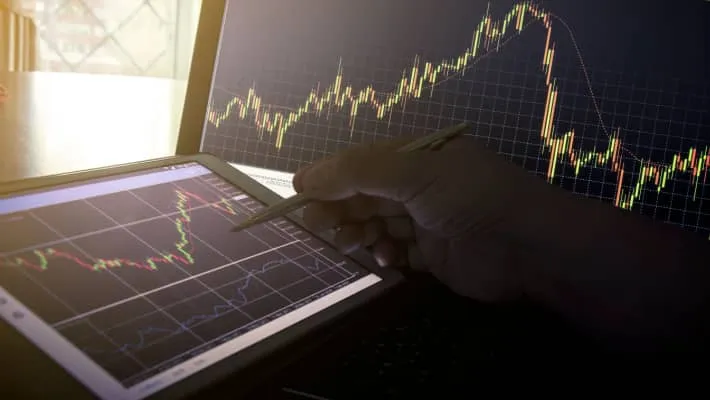Thursday Feb 29 2024 12:42

9 min

One of the biggest advantages of portfolio management tools is that they don’t charge account fees or require a minimum account balance to get started. Most also integrate easily into your existing trading platforms and accounts for consolidated tracking.
With portfolio management tools, you can easily track your positions, analyze performance, assess risk, and make informed investment decisions.
One of the most basic but essential portfolio management tools is a detailed trade journal. This is especially essential for active traders who make frequent trades. A trade journal allows you to manually log and track details of every trade, including:
Reviewing your trade journal regularly allows you to analyze your winning and losing trades. Over time, you can identify any patterns and mistakes and improve your trading strategies. Trade journals are ideal for tracking short-term trades.
Consider using a more automated trade management tool if you are trading frequently. These allow you to quickly log your trades with relevant details that can be exported for analysis. Advanced platforms also allow you to view your open positions and trading statistics, customize alerts, and more.
Markets.com stands out as a premier trading platform, providing access to the widely acclaimed MT4 and MT5. This renowned platform specializes in Contract for Differences (CFDs) trading, empowering you to engage in price speculation on various assets. The advanced platform is designed to enhance the efficiency and speed of your trading experience.
While trade journals are great for tracking individual trades, you also need a tool to monitor your overall portfolio. This provides insights into your asset allocation, performance metrics, and risk profile.
Many online brokerage platforms today provide basic portfolio management tools for free. For example, you can add all your investment holdings to the platform to track things like:
More advanced portfolio trackers include features like equity curves, drawdown analysis, volatility metrics, and risk-adjusted return tracking. This lets you go beyond portfolio value and dive deeper into performance.
Popular advanced portfolio trackers traders use include Tradier, Portfolio Performance, and Kubera. The key is choosing a tool that provides the analysis and visualization you need to manage your portfolio.
Traders should backtest strategies before putting real money at risk. Backtesting involves using historical data to simulate how a trading strategy would have performed.
Many trading platforms today offer embedded backtesting capabilities using historical tick, minute, or daily data. For example, you can backtest a stock screening or options strategy across a few years of data to estimate its viability.

Some more sophisticated backtesting tools allow you to optimize strategies by adjusting factors like entry/exit rules, position sizing, and risk management.
Once you have developed a promising strategy, you can further refine and validate it using paper trading. This involves executing simulated trades in real time with fake money to iron out any issues before live trading.
Popular backtesting and paper trading platforms include Thinkorswim, TradeStation, and NinjaTrader. The goal is to develop rigorously and test strategies before risking your portfolio.
Give this article a read: Backtesting Strategies - Ensuring Your Trading Plan’s Efficacy
Managing overall portfolio risk is crucial, especially for more extensive portfolios. This involves analyzing things like:
Some portfolio management tools provide statistics, metrics, and visualizations to assess these risk factors. For example, you can view a historical drawdown graph showing max portfolio loss over time.
Common risk metrics tracked include Value at Risk (VaR), volatility, beta, and Sharpe ratio. The most comprehensive platforms even allow you to do Monte Carlo simulations to model portfolio performance over thousands of simulated scenarios.
Leading risk analytics platforms are Portfolio Visualizer, MacroRisk Analytics, and PortfolioProbe.

For highly active traders, automating your portfolio management can boost efficiency. This involves executing your strategy using trading bots, algorithms, and AI.
Benefits of automation include:
Automated trading still requires upfront work to code your logic and rules. Backtesting is even more important to ensure your algorithm behaves as expected across diverse market conditions.
Once confident, you can deploy automated trading strategies across crypto, stocks, options, forex, and other asset classes. Popular platforms to run trading bots include TradeStation, QuantConnect, and 3commas.
Just remember to start small, manage risk, and keep monitoring your algorithm, even in live trading. Automation makes sense for proven strategy execution, not mindlessly gambling.
Consider giving this a look: AI Trading For Beginners
Over time, as markets fluctuate, your portfolio asset allocation will skew away from original targets. Rebalancing involves periodically buying and selling assets to maintain your desired allocations.
For example, hold 60% stocks and 40% bonds in your portfolio based on your goals and risk appetite. If, after one year, the equities have surged to 70%, you would sell some stocks and buy more bonds to rebalance back to 60/40 allocation.
This forces you to sell high and buy low to align your portfolio with long-term targets. Rebalancing tools can automate this process and trigger trades when allocations deviate by a specified amount. This maintains risk in line and adheres to your investment policy.
You might also like to read: Index Rebalancing - Why Do Indices Get Rebalanced?
Managing an investment requires portfolio management tools for tracking trades, monitoring performance, and mitigating risk. While individual trade management is necessary, a holistic view of your entire portfolio is also critical.
Utilizing a mix of manual and automated tools can provide the flexibility different types of investors and traders need. The key is identifying gaps in your current process and selecting platforms to enhance your strengths while minimizing weaknesses.
With the proper portfolio management tools in place, you can pursue your trading or investing goals with greater confidence and efficiency. The technologies and platforms discussed in this article are a great starting point to build a comprehensive portfolio management strategy tailored to your needs.
Learn and trade with markets.com: The ultimate trading community!
“When considering “CFDs” for trading and price predictions, remember that trading CFDs involves a significant risk and could result in capital loss. Past performance is not indicative of any future results. This information is provided for informative purposes only and should not be considered investment advice.”